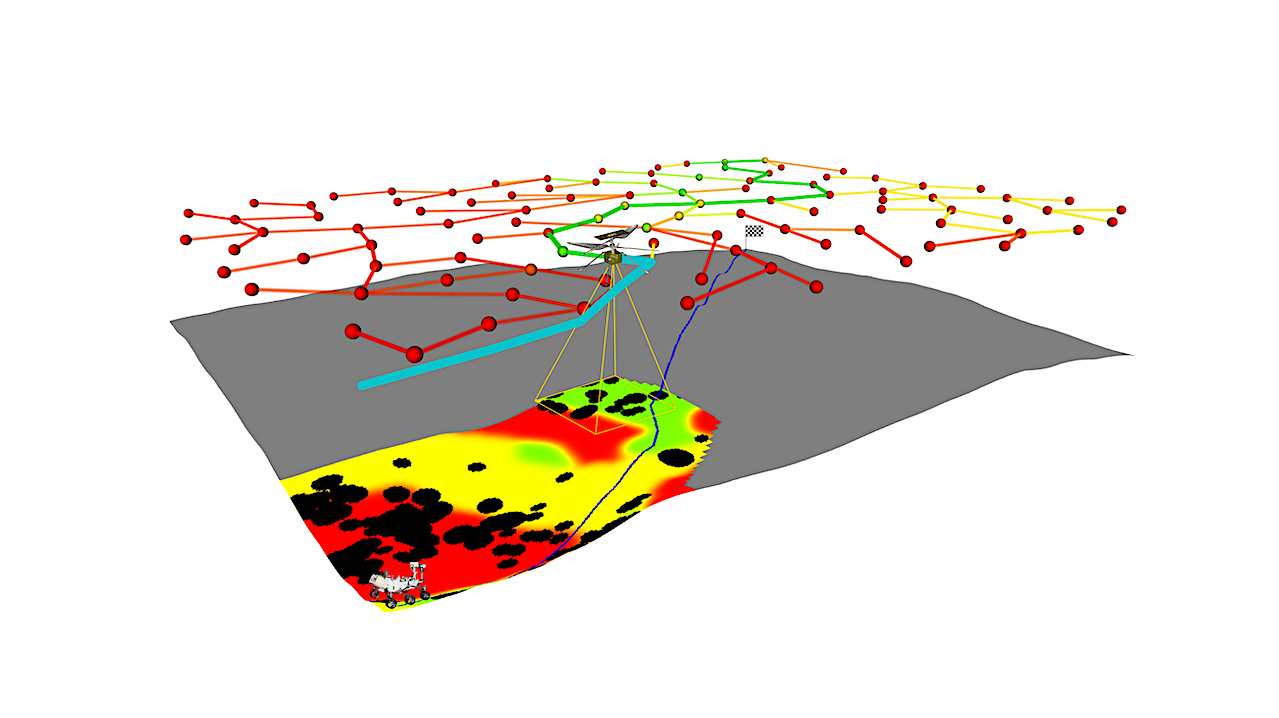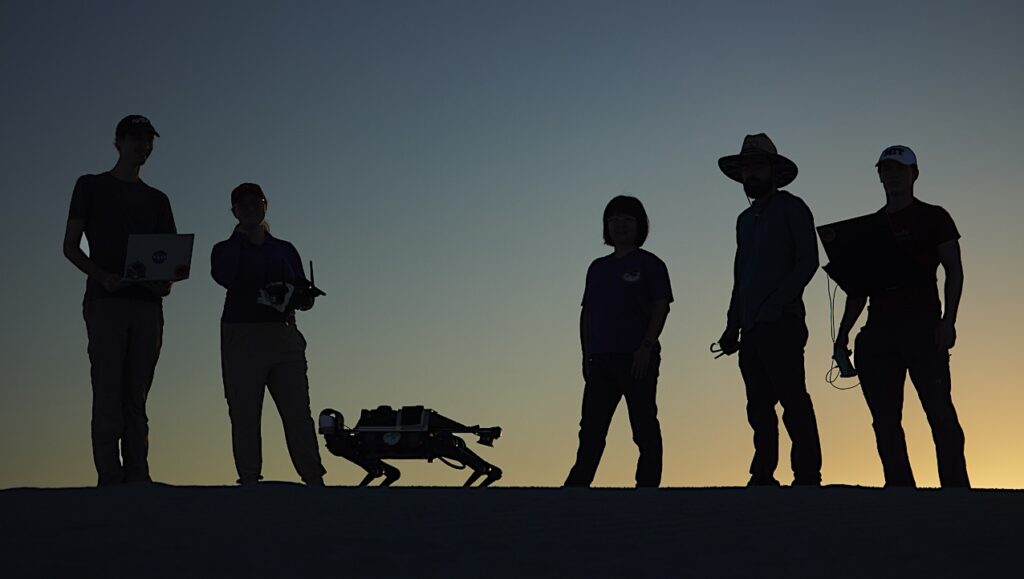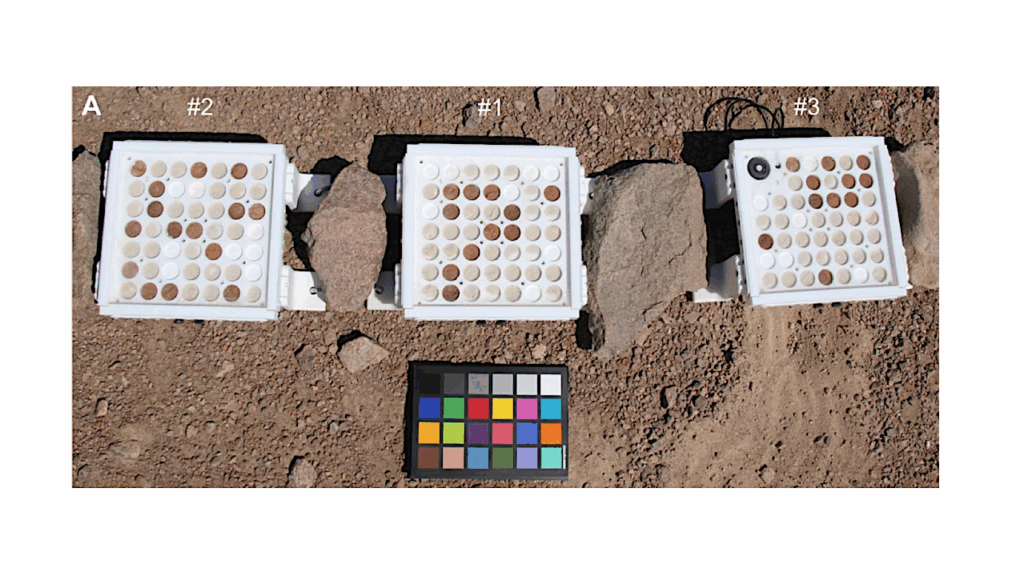Traversing Mars: Cooperative Informative Path Planning to Efficiently Navigate Unknown Scenes

The ability to traverse an unknown environment is crucial for autonomous robot operations. However, due to the limited sensing capabilities and system constraints, approaching this problem with a single robot agent can be slow, costly, and unsafe.
For example, in planetary exploration missions, the wear on the wheels of a rover from abrasive terrain should be minimized at all costs as reparations are infeasible. On the other hand, utilizing a scouting robot such as a micro aerial vehicle (MAV) has the potential to reduce wear and time costs and increasing safety of a follower robot.
This work proposes a novel cooperative IPP framework that allows a scout (e.g., an MAV) to efficiently explore the minimum-cost-path for a follower (e.g., a rover) to reach the goal. We derive theoretic guarantees for our algorithm, and prove that the algorithm always terminates, always finds the optimal path if it exists, and terminates early when the found path is shown to be optimal or infeasible.
We show in thorough experimental evaluation that the guarantees hold in practice, and that our algorithm is 22.5% quicker to find the optimal path and 15% quicker to terminate compared to existing methods.
Friedrich M. Rockenbauer, Jaeyoung Lim, Marcus G. Müller, Roland Siegwart, Lukas Schmid
Comments: 8 pages, 9 figures, code will be available at this https URL
Subjects: Robotics (cs.RO)
Cite as: arXiv:2406.05313 [cs.RO] (or arXiv:2406.05313v2 [cs.RO] for this version)
https://doi.org/10.48550/arXiv.2406.05313
Focus to learn more
Submission history
From: Jaeyoung Lim
[v1] Sat, 8 Jun 2024 01:10:22 UTC (12,076 KB)
[v2] Wed, 12 Jun 2024 11:41:17 UTC (12,077 KB)
https://arxiv.org/abs/2406.05313
Astrobiology,








